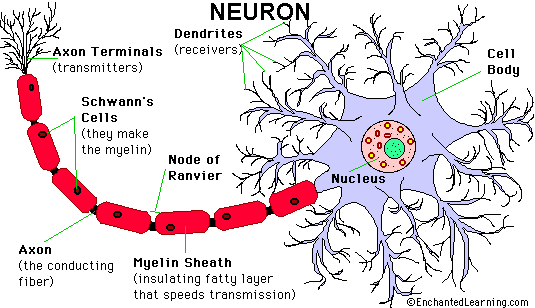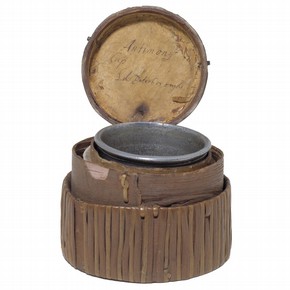gaveupontv
Harmless

Posts: 5
Registered: 5-7-2009
Member Is Offline
Mood: No Mood
|
|
fascinating (at least to me!) link to common toxins
I'm mostly a lurker here, and I was reading a post here, that someone had posted a link to a poisonous common substance. I went there and found a lot
of info to COMMON toxins, many of which had been used to kill, accidentily and criminally. Lots of them I had no idea were poisonous (unless in large
amounts) Sodium Chlorate, Sodium Nitrate, Sodium Nitrite (I knew this was toxic) Nitric acid, and many others.
I regret that I didn't give credit to the person who originally linked to the very interesting Professor of Forensic Medicine Anil Aggrawal from
India. He's contributed to Science Reporter on a monthly basis from at least 1997 to 2000, and here is some links to his [url=
http://members.tripod.com/prof_anil_aggrawal/]home page[/url] and a link to some of his [url=
http://members.tripod.com/~Prof_Anil_Aggrawal/index1.html]articles[/url]
|
|
|
niertap
Hazard to Self
 
Posts: 76
Registered: 5-8-2011
Member Is Offline
Mood: hyper-conjucated
|
|
Everything can kill you if there's enough of it.
Ignorance is bliss
Outliers in life are modeled by chemical kinetics
|
|
|
peach
Bon Vivant
    
Posts: 1428
Registered: 14-11-2008
Member Is Offline
Mood: No Mood
|
|
It may surprise some to know that the most toxic thing (chemical wise) on the planet grows in your dinner; the bacteria Clostridium botulinum. The
LD50 of it's toxins are around two thousand times lower than those for the purpose built nerve agent VX.
Around half a kilo of the toxins would represent a lethal dose for most of the earth's population. The toxins are more commonly known by their
trademan, Botox.
The toxins are complex polypeptides, not something that can be easily synthesised from laboratory reagents. They have an enzyme functionality that
disables vesicle fusion proteins in our nerves. This is the key to their toxicity, because the vesicles carry neurotransmitters into the synaptic
junctions. Without the vesicles fusing, no neurotransmitter can be released. Without the neurotransmitter, there is no muscle control. Hence, it
paralyses the muscle.
This is why humans, and many other animals, have developed not only the ability to smell and taste decay in meat, but to experience disgust when
sensing the warning signs; the smell sometimes causing people to vomit before it ever gets close to their mouth. If that fails, they will probably
begin vomiting and defecating a short time after it reaches their stomach, in an attempt to get it back out again as fast as possible.
It is also why sodium nitrite is added to meat; to kill the Clostridium.
As neirtap suggests, it's not what is and isn't toxic, it's how toxic and how likely. Sodium nitrite is labelled as toxic, but it is around two
hundred million times less so than the Botulinum toxins, making it a worthwhile trade off. Preserving salt contains just 0.6% sodium nitrite and is
dyed pink to make it obvious it's not regular salt.
The nitrite is often not present in raw meat. Food hygiene people are adamant about refrigerating meat that you or a caterer has cooked from raw as
the bacteria may still be there (or invade) and will begin to rapidly multiply if it is left somewhere warm for prolonged periods. The toxins aren't
destroyed by proceeding to pasteurise the product and it is the toxins (rather than the bacteria) which make people sick.
Purposefully poisoning people used to be a good way to bump off an auntie or two and inherit their estate. It's not so good now, as a coroners job
description is to determine the cause of death, and they will specifically look for signs of foul play (toxins in the corpse).
There are, however, numerous examples of people (particularly in hospitals, bars, schools etc), accidentally mixing together commercial strength
cleaners and subsequently gassing the place out with things like chlorine.
Carbon monoxide (produced by flue gases venting into the house and improperly set mix ratios) frequently causes problems at home. And hydrogen
sulphide (sewer gas) is the second leading cause of industrial deaths, beaten only by fire.
A bottle of 96% sodium nitrite:

The back of a pack of cooked ham from my fridge:

A neuron (you have about a hundred billion of these in your brain). The neural processes are the dendrites and axons. The ends of these are called
boutons (bulbs). The synapses form the bridge from these to processes to and from other neurons and cells:

Vesicle cycling at the boutons:

Botulinum toxin disables the protein that fuses the vesicle to the cell wall:

I have another, more amusing, example of common poisoning. In fact, voluntary poisoning.
During the Victorian period in England, pharmacies began appearing. The things they sold were often quite odd and, sometimes, quite toxic.
At this point in medicine, their understanding was based around the four temperaments (humors); black bile, yellow bile, blood and phlegm. When
someone was well, these were in balance. When they were sick, one or more of those was out of balance; enter, blood letting. They were hot on purging.
The amusing example comes in the form of 'The Everlasting Pill'.
The pill is simply a small lump of antimony. It would be swallowed, a little would dissolve in the stomach, causing the person to 'purge' (possibly
from both ends) and it'd then be recovered from the exiting purge, rinsed off and kept around for future purging.

The idea dates back even further to ancient Rome. Rather than being used for supposed medicinal gain, antimonial cups (similar to the one below),
would be filled with wine and left to sit for an upcoming party. The guests would stuff themselves, then drink the wine, throw it all back up, then go
back for more.
It was a dream of mine to own such a device, but I discovered they are extremely rare (there are only six antimonial cups in the UK, and the Romans
spent a good while here, partying it up).

[Edited on 15-3-2012 by peach]
|
|
|
neptunium
National Hazard
   
Posts: 985
Registered: 12-12-2011
Location: between Uranium and Plutonium
Member Is Offline
|
|
without getting too much into the whole tobaco hazards, as of july 2010 ever cigarettes sold on th US must be fire safe (Fire Safe Compliant) this is
done by addintion of paper and rings that are suppose to stop the combustion of a cigarette if not puffed on for a few minutes.
the chemical added in those rings i beleive is vinyl acetate which is a common glue and plastic additive and has never been approved for combustion
much less smoke inhalation by humans..
now we can be outaged by the roman's greed and the victorian era doubious medical practice (i remember reading that radium and uranium were added to
drinking water for energy drinks) but we are to this day adding chemicals in food and food product we dont have a clue how they will behave inside the
body.
Granted a lot of research goes into these additive (execpt tobaco paper) but toxin are often discover after they kill or hurt people and then ban..
not long ago mercury was in every family thermometer and we knew it was toxic!
|
|
|
|